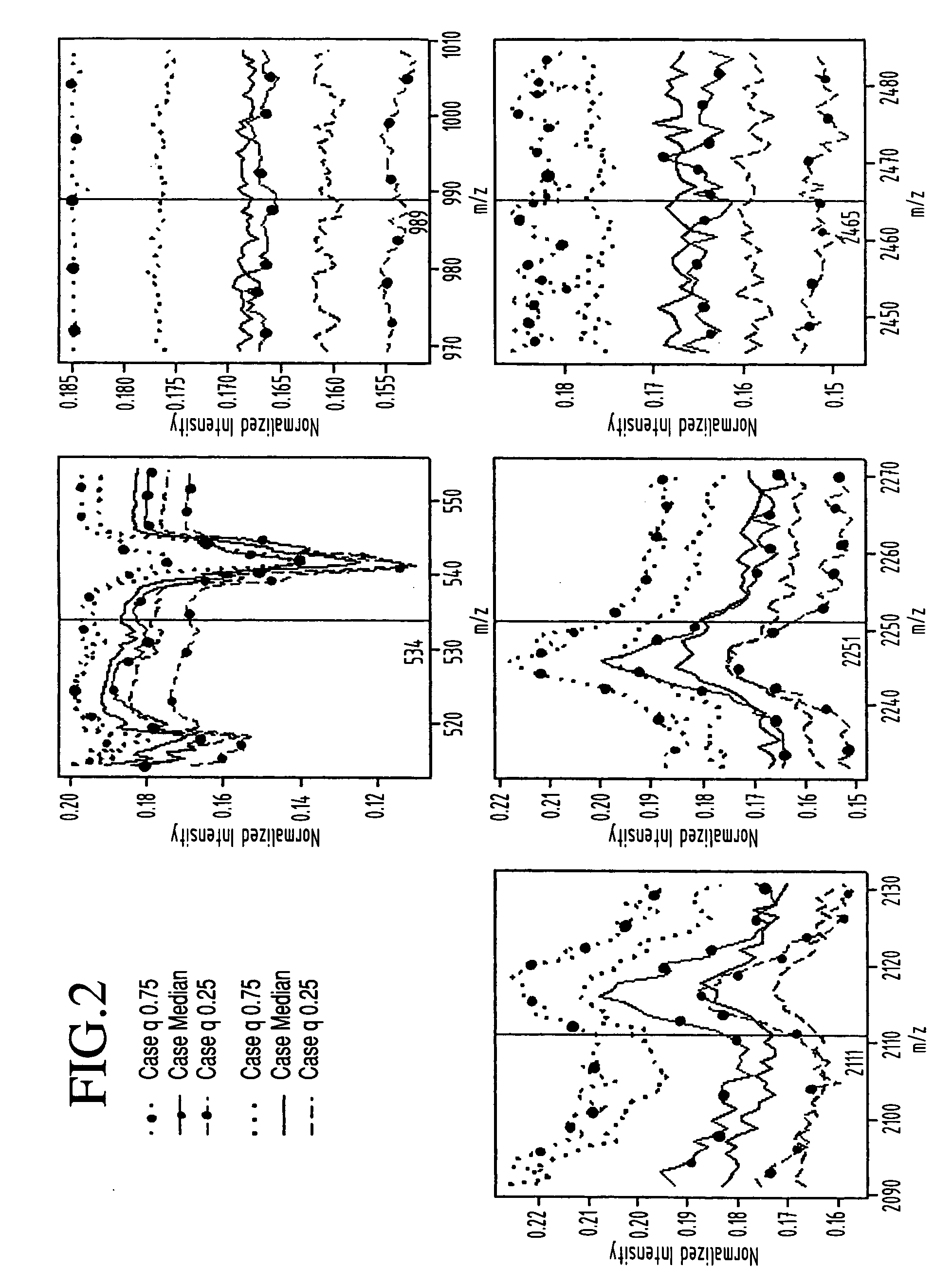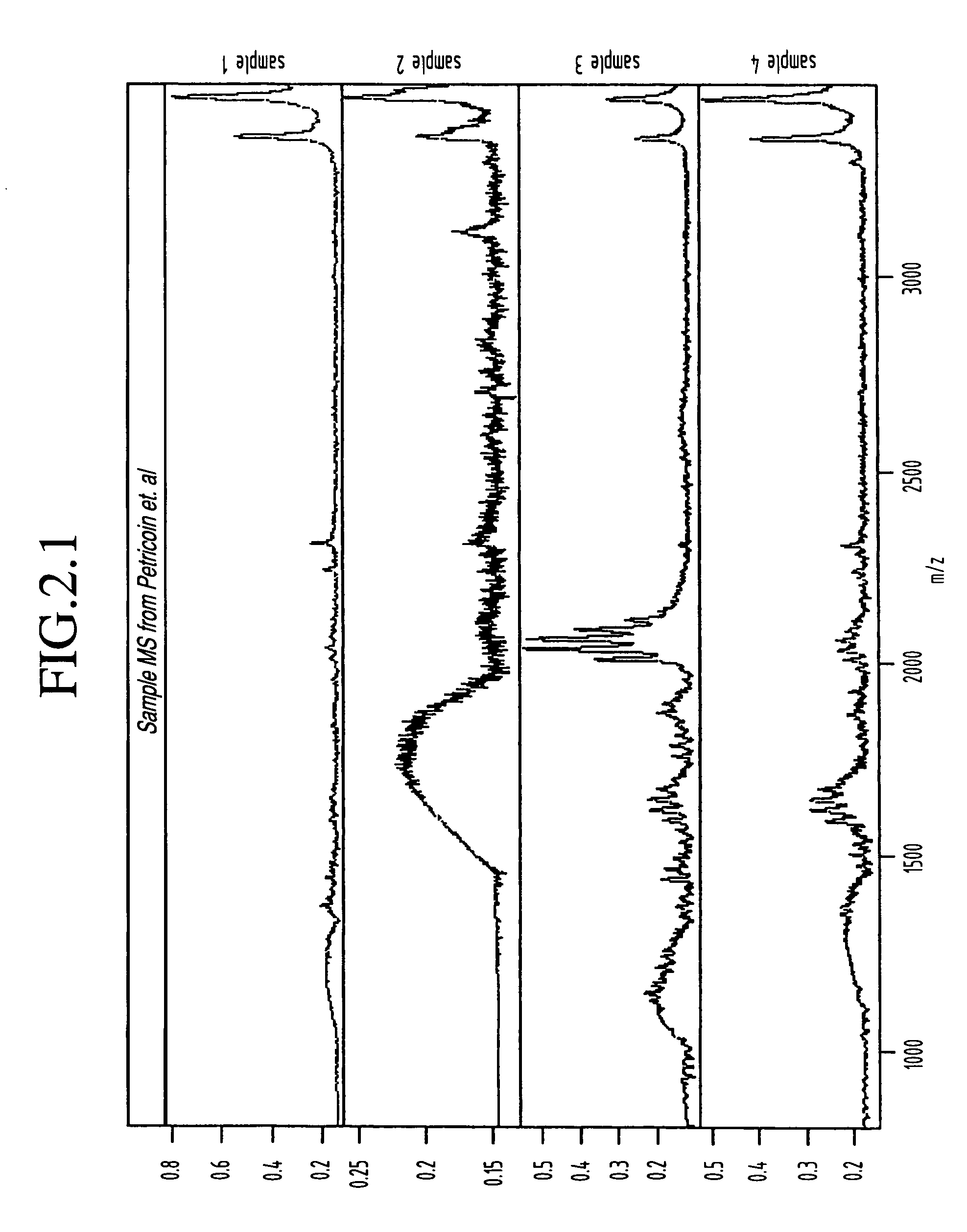Classification of disease states using mass spectrometry data
a mass spectrometry and disease technology, applied in the field of comprehensive statistical, computational and visualization, can solve the problems of inability to detect, identify or quantify post-translational protein modifications in microarray analysis, difficult endeavor, and prior art not making it currently possible to carry out a massive parallel
- Summary
- Abstract
- Description
- Claims
- Application Information
AI Technical Summary
Benefits of technology
Problems solved by technology
Method used
Image
Examples
example 1
Biomarker Analysis of Serum Samples from Ovarian Cancer Versus Control Patients
The 95 ovarian cancer and 92 control serum samples used in our analysis were obtained from the National Ovarian Cancer Early Detection Program at Northwestern University Hospital and correspond with some of the same samples that were used previously by Petricoin et al. As described above with reference to the experimental procedures, all samples were desalted via adsorption / elution from C18 ZipTips and were then subjected to MALDI-MS on a Micromass M@LDI-R instrument (note that at the time this data was acquired the Micromass M@LDI-R instrument had not yet been upgraded to the linear / reflectron (L / R) version) with all procedures being highly automated. The detailed protocol can be found in Appendix.
This data set consists of mass spectrometry spectra that were obtained on serum samples from 95 patients with ovarian cancer and 92 normal patients. These spectra extend from 800 to 3500 Da and were acquire...
example 2
In accordance with a preferred embodiment, the principles outlined above were applied. In particular, ovarian cancer and control serum samples were obtained from the National Ovarian Cancer Early Detection Program at Northwestern University Hospital. The Keck Laboratory then subjected these samples to automated desalting and MALDI-MS on a Micromass M@LDI-L / R instrument (as opposed to the Micromass M@LDI-R instrument used in Example 1) as described generally in Appendix A.
The M@LDI-L / R mass spectrometer automatically acquires two sets of data in positive ion detection mode. The mass range acquired is dependent on the mass analyzer being used, with 700-3500 Da for reflectron and 3450-28000 Da for linear. This dataset consists of merged mass spectrometry spectra that extend from 700 to 28000 Da and that were obtained on serum samples from 93 patients with ovarian cancer and 77 normal patients.
As mentioned above, Random Forest combines two powerful features: Bootstrap to produce ps...
PUM
| Property | Measurement | Unit |
|---|---|---|
| mass | aaaaa | aaaaa |
| mass | aaaaa | aaaaa |
| mass | aaaaa | aaaaa |
Abstract
Description
Claims
Application Information
 Login to View More
Login to View More - R&D
- Intellectual Property
- Life Sciences
- Materials
- Tech Scout
- Unparalleled Data Quality
- Higher Quality Content
- 60% Fewer Hallucinations
Browse by: Latest US Patents, China's latest patents, Technical Efficacy Thesaurus, Application Domain, Technology Topic, Popular Technical Reports.
© 2025 PatSnap. All rights reserved.Legal|Privacy policy|Modern Slavery Act Transparency Statement|Sitemap|About US| Contact US: help@patsnap.com



